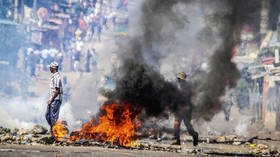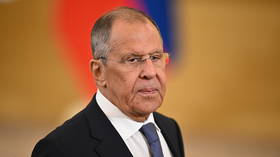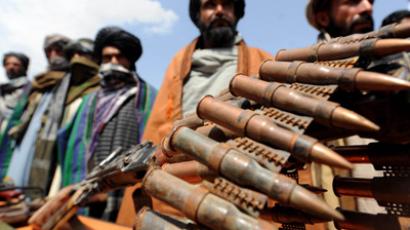$200 million in Afghan heroin seized in drug bust near Moscow
Nearly 200 kg of Afghan heroin has been seized during a raid in Moscow region. The drug was hidden amid radishes and dyed green to be less noticeable.
Viktor Ivanov, the head of Russia's Federal Drug Control Service (FDCS) said that “187 kilograms of high concentrated heroin was seized. This product was produced in Afghanistan and taken to Russia for distribution and sales”.
The bust prevented the distribution of drugs with an estimated street value of between $180 to 200 million, Ivanov added.
The heroin made it all the way from Afghanistan through Central Asian countries in bags of radishes. The heroin was dyed green to replicate the color of the vegetables, in order to be more difficult to detect.
The FDCS believes they blocked a major supply route of drugs from Afghanistan through Uzbekistan.
“Contract for the supply of vegetables was made in the amount of 40 million dollars. The company is registered in Tashkent region [Uzbekistan], and the recipient – the Russian company 'Voskhod,' registered in Orenburg [Urals region]," Ivanov said.
Two people were arrested and two others were detained, and the investigation is still ongoing.
The bust took place early on February 22, shortly after the car of the alleged drug smugglers left the gate of their horticultural base, heading to a marketplace in Moscow’s regional town of Dolgoprudnuy, where they were caught, RIA Novosti reported.
Among the 60 bags of radishes inside the car, bundles of heroin that weighed about 1 kilogram each were discovered, according to the FDCS. Each bundle was processed in dog fat so that police dogs could not detect the drug, said Ivanov.
Russia, along with Western forces, is trying tackle the Afghan drug problem. Since US and NATO forces invaded Afghanistan, drug production in the country has increased up to 5,000 percent, with the narcotics supply into Russia doubling during that period. FDCS head Ivanov believes that the amount of Afghan drugs imported into Russia will start decreasing in 2014, when US troops leave Afghanistan.
In late August 2008, the UN Office on Drugs and Crime (UNODC)
released its annual report on the production of opium poppies in
Afghanistan: "No other country in the world, except China in the
mid-19th century, produced so many drugs as modern
Afghanistan."














